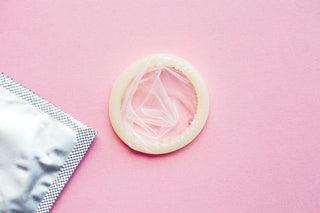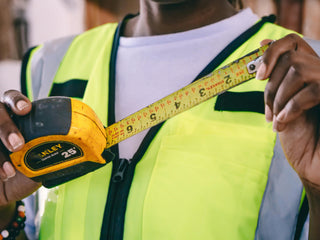Condoms are not a new invention; you might be surprised to know that condoms, in one form or another, have been preventing pregnancy and providing a barrier from STDs (sexually transmitted diseases) for a very long time - thousands of years, in fact.
The condom has been through many incarnations, some more effective than others. To get to the favoured designs we love today, early adopters went through a lot of trial and error to perfect their designs to include the best condoms for feelings.
The history of condoms is an interesting and educational one. And we have a few questions: When were condoms invented, and who invented them are top of the list in the history of condoms.
Table of Contents:
- When were condoms invented?
- The 1600s and the condom
- An 18th-century view of the condom
- Charles Goodyear's rubbers take over
- The modern condom
When were condoms invented?
A very crude version of a condom has been depicted on the walls of caves in Egypt as far back as 200 AD, with some historians linking the very first sheath to 1000 BC. Ancient Romans used bladders of animals as a sheath to protect from venereal disease.
As you can imagine, there is little information about the first condoms before the 1500s but some resources show that the first use of a condom was by King Minos of Crete. There are also records suggesting that glans condoms were used for birth control in Asia prior to the 15th century.
In 1594 Gabrielle Falloppia, a doctor from Italy, prescribed the earliest form of condom (a linen sheath soaked in medicine) as a syphilis prevention method. Historians herald Falloppia as the inventor of the modern-day condom.
But that's not all - Falloppia gave his name to the fallopian tube after studying the male and female reproductive organs. It makes sense that Falloppia would design the first sheath with all his medical knowledge and skill.
In the 17th century, the personal physician of King Charles II was credited with perfecting Falloppia's design by using stretched pork intestine with an oil lubricant. Animal skin has since become a common material for condoms, especially for people with latex allergies.
The 1600s and the condom
There are references to the condom in journals that talk about sheaths made from sheep or goat gut, and their use was more about protecting from disease than a way to protect from unwanted pregnancy.
Around the same time, historians credit the Ndyuka people of New Guinea with designing the female condom. In complete contrast to the designs favoured by the Greeks, Romans and Egyptians, the Ndyuka made the female condom from organic material placed inside the vagina before intercourse to prevent pregnancy.
The pressure of the vagina helped to keep the condom in place, and the pregnancy rate within the Ndyuka people declined as a result.
Condoms and religion
During the same period in the west, the tide was turning again to using condoms on religious grounds. Leonardus Lessius, a Jesuit priest, campaigned again the condom because they were sinful.
The Jesuits (Catholics) created the Counter-Reformation to establish the church's ideals on personal, scientific and cultural matters that might affect Christian Europe and challenge the church's hold on its community.
An 18th-century view of the condom
In the early 1700s, condoms received unfavourable press. The second Duke of Argyle, John Campbell, lobbied to have condoms made illegal; as a member of parliament, Campbell claimed they were not fit for purpose as they did not prevent syphilis.
While authorities generally focused on the condom to prevent sexually transmitted diseases, it was later in the 18th century that religion came into play and condoms were considered immoral and the tools of philanderers and sex workers.
As we move rapidly into the 1800s and the 19th century, we find a modern look at the history of condoms.
Charles Goodyear's rubbers take over
In the 19th century, condoms were popular with the rich and middle classes, but things were about to change that would make condoms accessible to all. We introduce Charlie Goodyear, the self-taught chemist, and his vulcanised rubber.
Goodyear, he of the tyre fame, changed the way condoms were manufactured forever. The silk stocking condoms popular with the rich in China began to lose their appeal, and the paper one-size fits all European condom, while still available, was shown to be severely lacking. Rubbers were taking over.
The discovery of vulcanised rubber
While Goodyear was applauded for inventing the condom, in reality, what he created was vulcanised rubber, and even this discovery was an accident.
Nathaniel Hayward discovered the volcanising process, and Goodyear bought Hayward's formula and granted a patent for the recipe for rubber vulcanisation in the mid-1800s.
The condom, or what was to become the modern-day condom, did not bring Goodyear fame and fortune. After many years of wrangling and legal battles, a bankrupt Goodyear died in a debtors' prison in France.
Condom popularity grew despite bad publicity
But condom popularity did not decline even with the negative publicity from sources such as Marie Stopes, the 19th-century social worker and birth control advocate.
Stopes rejected the use of condoms on medical grounds. While she supported birth control, she also believed in Eugenicical birth control to prevent 'inferior or low-class women from having children.'
In an era where piano legs had to be covered, and women who showed their ankles were considered immoral, condoms were considered a gateway to pleasure. Although Sigmund Freud, the father of psychoanalysis, opposed all forms of birth control, he especially disliked condoms as they were a barrier to sexual pleasure.
The two objects appear to be contradictory, to say the least.
The modern condom

In the early 1900s, Ernest Hopkins, an inventor at the United States Rubber Company, invented modern latex. While still rubber, Hopkins latex used water to suspend the rubber rather than petrol products used in other factories.
The biggest plus for Hopkins (apart from preventing factory fire hazards) was the quality of the condom. Latex condoms are thinner but strong and have a long shelf life.
The Germans had been manufacturing latex condoms for years, but production moved to London after the first world war. During World War II soldiers were provided with condoms to keep dirt out of a rifle barrel, an unintended but highly useful type of condom usage.
Condoms have had their ups and downs, and politics and economics have played a part, but 60% of British married couples relied on condoms as a reliable birth control method. The pill had not yet been invented, so condoms were the only safe form of birth control.
The Durex revolution
As we move forward into the 20th century, advancements in the design of condoms accelerated thanks to companies like Durex. Durex introduced the lubricated condom in 1957, inventing the first atomically shaped sheath and introducing a global quality seal as standard.
Today in the 21st century, due to the high demand there are many manufacturers of condoms; nothing is beyond their imagination. No longer one-size-fits-all; getting an XL or regular size in every rainbow colour is possible.
Condom sales are as high as ever due to clever condom advertising and better awareness about sexual health.
Female condoms are comfortable and practical, and there is evidence to suggest condoms are as popular today as they were way back when.
You can find every type of condom imaginable in our range of condoms, including biodegradable condoms and all types of flavours. If you are not sure which type of condom will serve you the best, have a read of our 12 different types of condoms you need in your life.
FAQs
How long do condoms last?
How long a condom lasts will depend on the material used and whether they are packaged with spermicide. Find out more about factors that affect expiry and how long condoms typically last.
How to put on a condom?
Putting on a condom can be tricky but once you get the hang of it, you will become a pro. You should hold the tip of the condom while you roll the sheath down the shaft of your penis - see the full guide for putting on a condom here.
What happens if you use an expired condom?
Using an expired condom puts you at a greater risk of it breaking and therefore catching an STI or having an unwanted pregnancy. You can read more information about the risks of using expired condoms and how to know if a condom has expired in our blog.
Why are condoms so expensive?
Condoms have to be tested rigorously to ensure that they are safe and effective and the raw materials used in condoms do not come cheap. There is a whole list of reasons why condoms are expensive.





